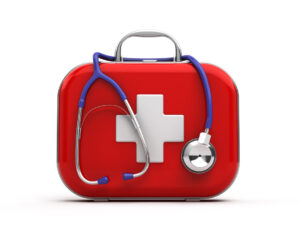Accidental overdoses have become a rising concern in recent years, affecting people from all walks of life. Knowing how to provide immediate help during an overdose can be the difference between life and death. Whether it involves opioids, alcohol, or other substances, a swift, informed response is essential to help stabilize the individual and keep them safe until professional medical help arrives. This guide outlines vital first-aid tips for handling an overdose calmly and effectively, providing lifesaving assistance in an urgent situation.
Emergencies can happen anytime, and First aid Glasgow training ensures you’re never unprepared. From CPR to wound care, courses are tailored to suit different needs and industries, making safety accessible to all.
1. Recognize the Signs of an Overdose
Understanding the symptoms of an overdose is the first step in offering appropriate help. Signs of overdose vary depending on the substance involved, but general symptoms may include:
- Difficulty Breathing or Slow Breathing: One of the most common signs, especially with opioid overdoses, is slow or irregular breathing. Breaths may be shallow or spaced far apart, or the individual may even stop breathing for intervals.
- Unconsciousness or Unresponsiveness: Someone overdosing may be difficult to wake or completely unresponsive. If the person cannot be roused with a gentle shake or by calling their name, this is a serious sign.
- Pale or Bluish Skin: Reduced oxygen flow to the skin often leads to a bluish tint around the lips or nails, especially with substances that depress the respiratory system, such as opioids or alcohol.
- Vomiting or Gagging: The body often tries to expel harmful substances, so vomiting can be common. Gagging sounds, or a “death rattle,” may occur as well.
- Confusion or Disorientation: Some overdoses cause erratic or confused behavior, as well as slurred speech or inability to focus.
Familiarizing yourself with these signs allows you to quickly assess the situation and determine if immediate action is necessary.
2. Call Emergency Services Without Delay
One of the most critical actions you can take is to call for emergency help. Even if you’re uncertain about the severity of the overdose, it’s always better to err on the side of caution. When calling emergency services:
- Provide clear, concise details about the situation, including what substance the individual may have taken and how much, if known.
- Describe the person’s symptoms and condition, such as difficulty breathing or unconsciousness.
- Follow any specific instructions the operator gives, as they may guide you through initial steps before medical personnel arrive.
Time is a critical factor in overdose situations, so calling emergency services should always be a priority.
3. Administer Naloxone for Opioid Overdoses
If you suspect an opioid overdose, such as from heroin, fentanyl, or prescription opioids, administering naloxone (Narcan) can be lifesaving. Naloxone is a medication that temporarily reverses the effects of opioids by blocking opioid receptors in the brain, allowing breathing to resume.
If you have naloxone on hand:
- Follow the instructions on the packaging, which may involve administering a nasal spray or an injection.
- Be prepared to give a second dose if the person doesn’t respond within two to three minutes.
- Stay with the person, as naloxone’s effects are temporary. A second dose may be necessary, and professional help is still essential.
Many communities provide free access to naloxone kits and training programs, making this a valuable resource for anyone concerned about opioid overdose risks.
4. Perform Rescue Breathing If Necessary
If the individual is not breathing or their breaths are extremely slow, performing rescue breathing can supply the oxygen they need until emergency responders arrive.
Here’s how to perform rescue breathing effectively:
- Check if the airway is clear by gently tilting the person’s head back and lifting their chin.
- Pinch their nose, cover their mouth with yours, and give two slow, steady breaths.
- Observe for chest rise; if the chest doesn’t rise, check again for any obstructions and repeat.
- Continue rescue breathing at a pace of one breath every five seconds until they resume breathing or emergency help arrives.
Avoid performing chest compressions unless specifically advised, as rescue breathing is often more appropriate in cases of overdose, especially with opioids.
5. Place the Individual in the Recovery Position
The recovery position is particularly helpful if the person is unconscious but still breathing. It keeps their airway open, prevents choking on vomit, and ensures they remain as comfortable and stable as possible. To place someone in the recovery position:
- Gently roll the person onto their side.
- Position the top leg at a right angle to stabilize their body.
- Tilt their head slightly backward to maintain an open airway.
Placing them in this position can prevent further harm while waiting for medical assistance.
6. Avoid Giving Food, Water, or Stimulants
When someone is overdosing, it can be tempting to offer water, coffee, or other stimulants in the hope of counteracting the effects. However, this can be counterproductive and even dangerous:
- Stimulants can increase stress on the heart and body, exacerbating the overdose.
- If the individual vomits, food or liquid can obstruct their airway and lead to choking.
Simply ensure they are in a safe, comfortable position and focus on monitoring their breathing rather than attempting to dilute the substance or “wake them up” with caffeine or other stimulants.
7. Remain Present and Provide Reassurance
Staying calm and supportive is invaluable, especially if the person is semi-conscious or able to respond. Reassure them that help is on the way, and avoid any actions that might cause panic or confusion. A composed presence not only helps the individual feel secure but also allows you to act more effectively.
If the person becomes agitated or confused, maintain a gentle tone and avoid any sudden or aggressive movements. Overdose can cause intense feelings of anxiety and disorientation, and a calm demeanor can help ease their distress.
8. Cooperate with Emergency Responders Upon Arrival
When emergency personnel arrive, provide a clear and detailed account of what you know, including:
- The substance involved, if known, and any estimated amount taken.
- Symptoms you observed and any first aid measures you administered, such as naloxone or rescue breathing.
Accurate information helps responders make informed decisions quickly, providing the best care for the individual. Even if they recover enough to sit up or communicate, they should still go to the hospital, as overdose symptoms can recur after initial improvement.
9. Follow Up and Consider Preventive Measures
After the immediate crisis is over, it’s worth considering preventive steps for the future:
- If the overdose was due to opioids, inquire about obtaining a naloxone kit for future emergencies.
- Encourage a conversation about substance use support resources. Many communities offer counseling, support groups, and intervention programs that can provide ongoing help.
By staying informed and preparing for potential overdose situations, you can contribute positively to your community and be ready to assist when needed. An informed response not only saves lives but also fosters an environment of compassion and readiness in the face of challenging circumstances.













